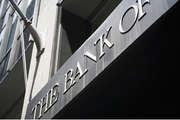
Image: Tradeweb.com
A resident of New Jersey, Rao Chalasani has an extensive background as a financial services executive. While serving as vice president of global fixed income technology/e-commerce with Merrill Lynch in New York, NY, Rao Chalasani contributed to a number of e-initiatives, including the implementation of Tradeweb, an electronic platform for trading US Treasuries.
Since 1998, Tradeweb has been the main source for US Treasury bond trading. With more than 1,000 institutional clients, the platform offers more than 1 million daily price updates and facilitates 22-hour trading options. Its request-for-quote trading protocol has been adopted by derivatives and fixed-income markets.
In May 2017, Tradeweb was named Overall Swap Execution Facility of the Year and Compression/Compaction Service of the Year at GlobalCapital’s Americas Derivatives Awards for 2017. The firm earned the award in recognition of its platform and solutions that support e-trading of derivatives. Tradeweb supports a range of clients and delivers specific platforms to help them achieve their goals.


